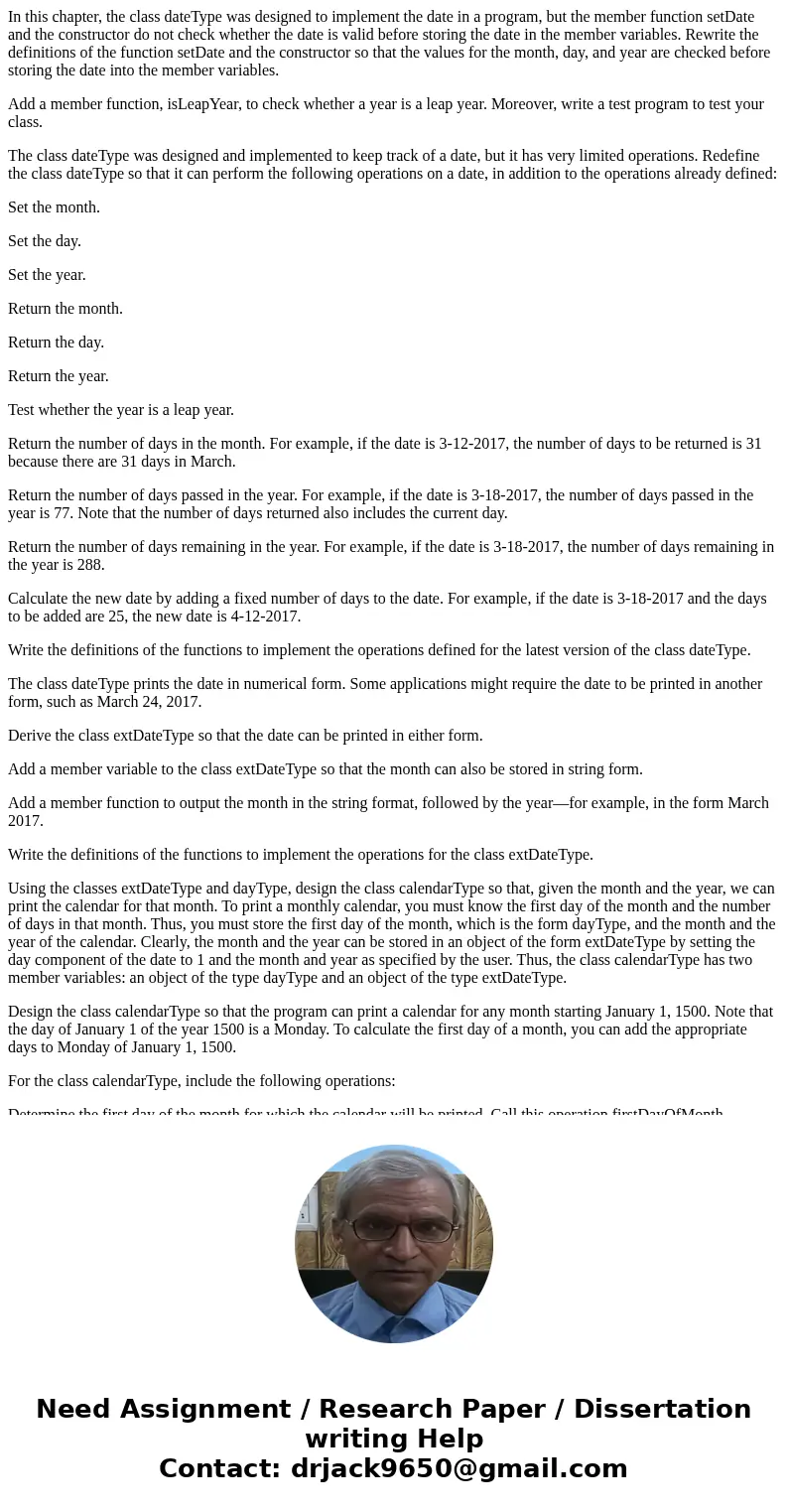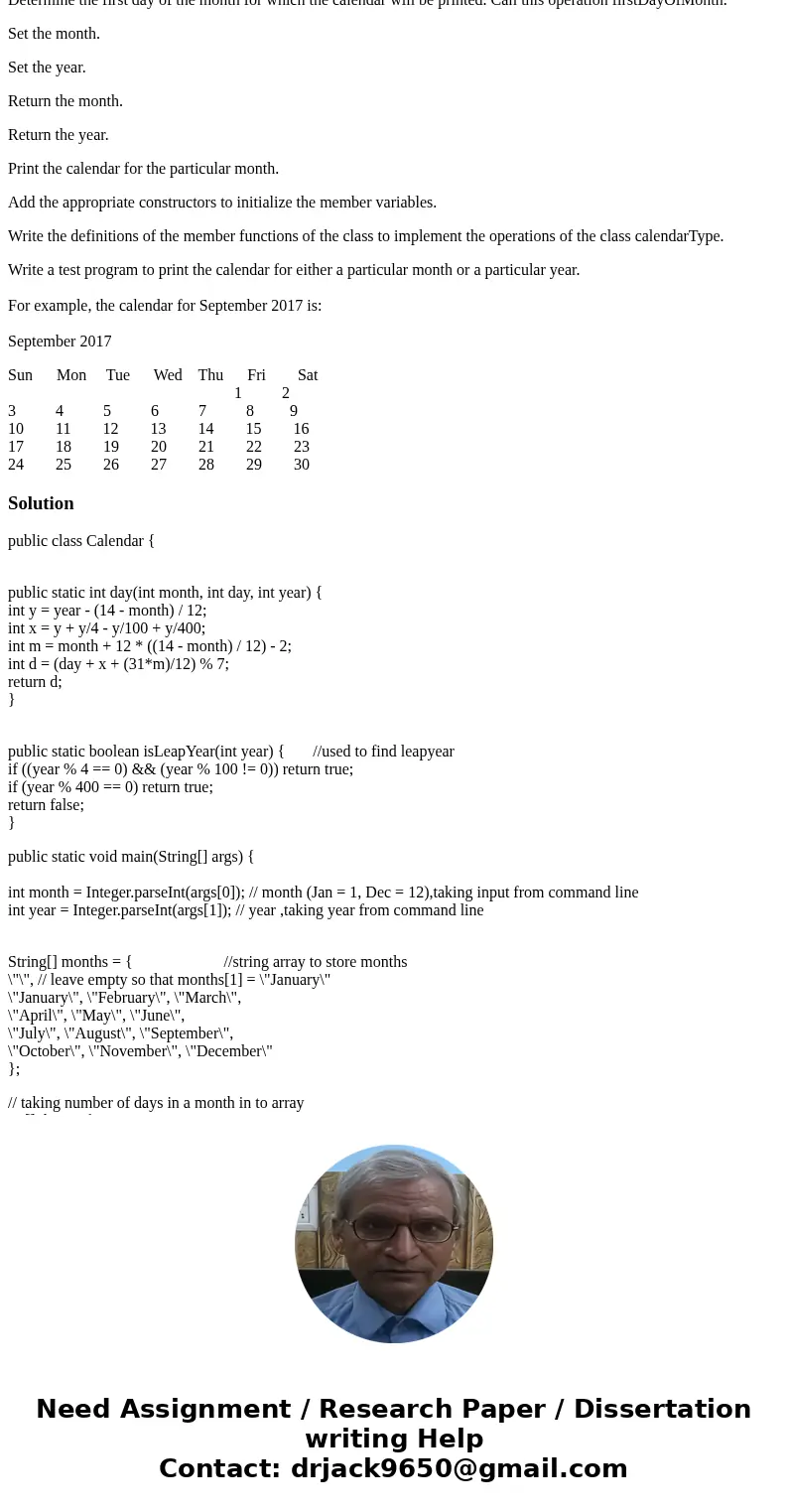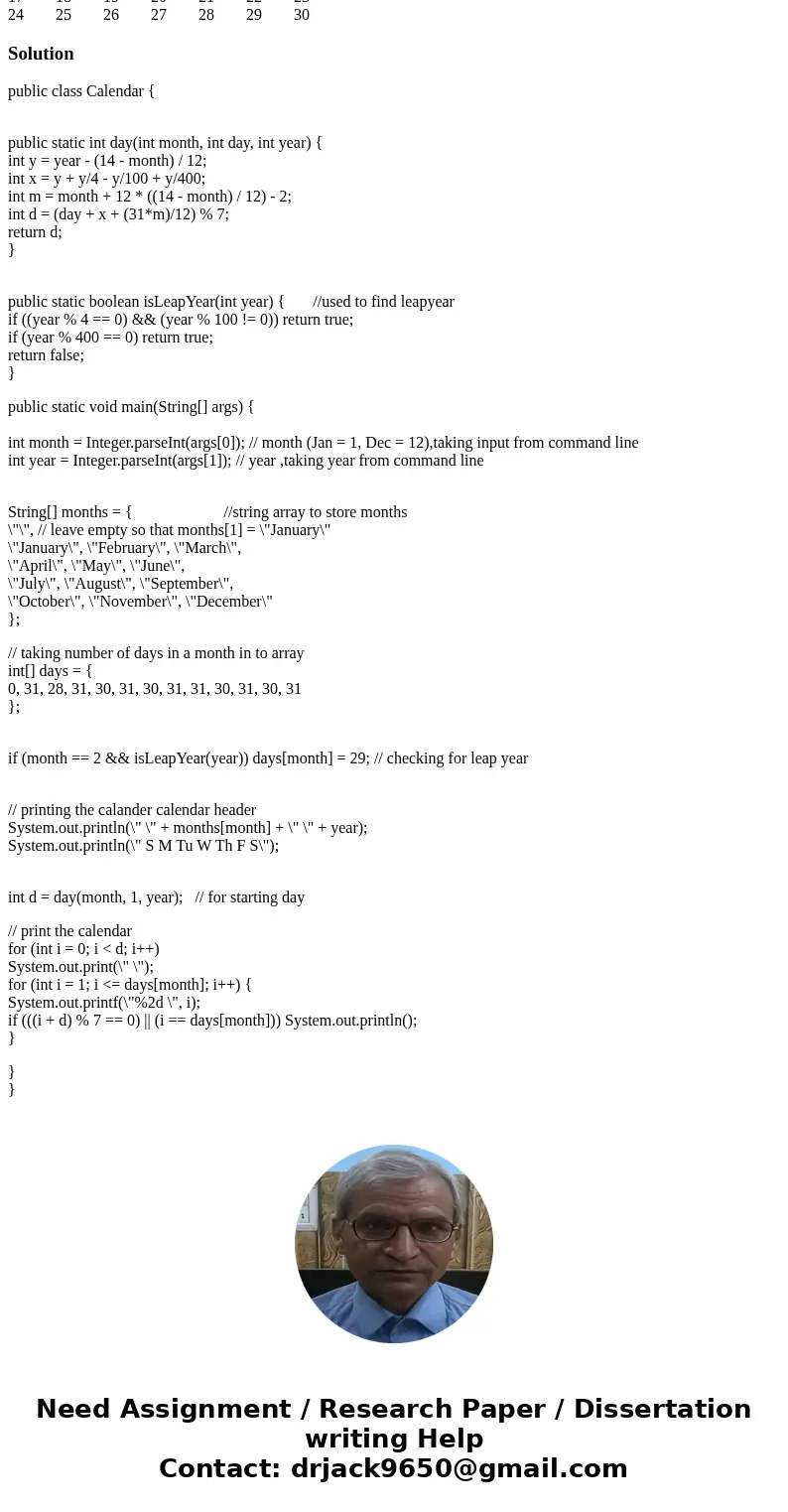In this chapter the class dateType was designed to implement
In this chapter, the class dateType was designed to implement the date in a program, but the member function setDate and the constructor do not check whether the date is valid before storing the date in the member variables. Rewrite the definitions of the function setDate and the constructor so that the values for the month, day, and year are checked before storing the date into the member variables.
Add a member function, isLeapYear, to check whether a year is a leap year. Moreover, write a test program to test your class.
The class dateType was designed and implemented to keep track of a date, but it has very limited operations. Redefine the class dateType so that it can perform the following operations on a date, in addition to the operations already defined:
Set the month.
Set the day.
Set the year.
Return the month.
Return the day.
Return the year.
Test whether the year is a leap year.
Return the number of days in the month. For example, if the date is 3-12-2017, the number of days to be returned is 31 because there are 31 days in March.
Return the number of days passed in the year. For example, if the date is 3-18-2017, the number of days passed in the year is 77. Note that the number of days returned also includes the current day.
Return the number of days remaining in the year. For example, if the date is 3-18-2017, the number of days remaining in the year is 288.
Calculate the new date by adding a fixed number of days to the date. For example, if the date is 3-18-2017 and the days to be added are 25, the new date is 4-12-2017.
Write the definitions of the functions to implement the operations defined for the latest version of the class dateType.
The class dateType prints the date in numerical form. Some applications might require the date to be printed in another form, such as March 24, 2017.
Derive the class extDateType so that the date can be printed in either form.
Add a member variable to the class extDateType so that the month can also be stored in string form.
Add a member function to output the month in the string format, followed by the year—for example, in the form March 2017.
Write the definitions of the functions to implement the operations for the class extDateType.
Using the classes extDateType and dayType, design the class calendarType so that, given the month and the year, we can print the calendar for that month. To print a monthly calendar, you must know the first day of the month and the number of days in that month. Thus, you must store the first day of the month, which is the form dayType, and the month and the year of the calendar. Clearly, the month and the year can be stored in an object of the form extDateType by setting the day component of the date to 1 and the month and year as specified by the user. Thus, the class calendarType has two member variables: an object of the type dayType and an object of the type extDateType.
Design the class calendarType so that the program can print a calendar for any month starting January 1, 1500. Note that the day of January 1 of the year 1500 is a Monday. To calculate the first day of a month, you can add the appropriate days to Monday of January 1, 1500.
For the class calendarType, include the following operations:
Determine the first day of the month for which the calendar will be printed. Call this operation firstDayOfMonth.
Set the month.
Set the year.
Return the month.
Return the year.
Print the calendar for the particular month.
Add the appropriate constructors to initialize the member variables.
Write the definitions of the member functions of the class to implement the operations of the class calendarType.
Write a test program to print the calendar for either a particular month or a particular year.
For example, the calendar for September 2017 is:
September 2017
Sun Mon Tue Wed Thu Fri Sat
1 2
3 4 5 6 7 8 9
10 11 12 13 14 15 16
17 18 19 20 21 22 23
24 25 26 27 28 29 30
Solution
public class Calendar {
public static int day(int month, int day, int year) {
int y = year - (14 - month) / 12;
int x = y + y/4 - y/100 + y/400;
int m = month + 12 * ((14 - month) / 12) - 2;
int d = (day + x + (31*m)/12) % 7;
return d;
}
public static boolean isLeapYear(int year) { //used to find leapyear
if ((year % 4 == 0) && (year % 100 != 0)) return true;
if (year % 400 == 0) return true;
return false;
}
public static void main(String[] args) {
int month = Integer.parseInt(args[0]); // month (Jan = 1, Dec = 12),taking input from command line
int year = Integer.parseInt(args[1]); // year ,taking year from command line
String[] months = { //string array to store months
\"\", // leave empty so that months[1] = \"January\"
\"January\", \"February\", \"March\",
\"April\", \"May\", \"June\",
\"July\", \"August\", \"September\",
\"October\", \"November\", \"December\"
};
// taking number of days in a month in to array
int[] days = {
0, 31, 28, 31, 30, 31, 30, 31, 31, 30, 31, 30, 31
};
if (month == 2 && isLeapYear(year)) days[month] = 29; // checking for leap year
// printing the calander calendar header
System.out.println(\" \" + months[month] + \" \" + year);
System.out.println(\" S M Tu W Th F S\");
int d = day(month, 1, year); // for starting day
// print the calendar
for (int i = 0; i < d; i++)
System.out.print(\" \");
for (int i = 1; i <= days[month]; i++) {
System.out.printf(\"%2d \", i);
if (((i + d) % 7 == 0) || (i == days[month])) System.out.println();
}
}
}



 Homework Sourse
Homework Sourse